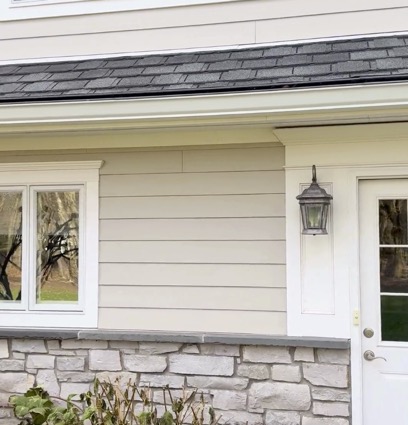Roof inspections in the spring and fall are an ideal way to preserve and protect your roof. Seasonal inspections and maintenance are best conducted during the transitional months when weather conditions are more moderate. You want to make sure your roof is prepared for the temperature extremes that are inevitable during New Jersey summers and winters.
In the summer, high winds can rip away shingles and harm flashing. Blistering heat can soften the asphalt in aging shingles enough that they can crack, cup or curl. High temperatures also subject roof components to the stress of repeated expansion and contraction cycles.
In the winter, aging shingles sometimes become brittle enough that they crack, especially when subjected to high winds and/or heavy ice accumulations. High winds or repeated freeze-thaw cycles may also damage flashing.
Routine periodic inspections and maintenance in the spring and fall will help your roof endure New Jersey’s weather extremes in the summer and winter.
Spring Inspection
Spring inspections are important because a variety of winter stresses threaten a roof’s integrity. New Jersey winters typically include dozens of freeze-thaw cycles. Water that works its way under flashing can lift and loosen the metal as it freezes. This is because water expands nine percent when it freezes, thus exerting a significant force.
Freeze-thaw cycles also require that roof materials flex. As shingles age, they may become brittle enough to crack. In the winter, aging shingles made brittle by extreme cold may crack, and contracting caulk may come loose.
During a winter storm, heavy snow will often accumulate around chimneys and other roof protrusions. Temperatures that repeatedly go above and below freezing turn snow to ice, leading to ice dams that may cause water to back up under shingles and leak into the roof’s sheathing and substructure.
A spring inspection by one of the well-qualified roofing contractors in NJ also reveals branches that require trimming to prevent roof contact. Overgrown branches will eventually scratch or even gouge roofing. They are also more susceptible to crashing down on the roof. Branch removal also denies squirrels and other critters easy access to your roof and your home’s interior.
Fall Inspection
As winter approaches, a certified inspector from one of the local roofing contractors in NJ should confirm that summer storms have not damaged flashing around chimneys, vents and other roof protrusions.
With aging roofs, in particular, it is important to determine whether summer heat has accelerated shingle deterioration like curling and cupping. When shingles do not lie flat, moisture intrusion is far more likely. A roof inspector will also look for shingles that went missing after straight-line or even cyclonic winds during thunderstorms.
Although organic growth on shingles is common in New Jersey, it must be monitored. Excessive moss, algae or lichen growth in the summer accelerates the deterioration of roofing materials. Algae staining and large moss accumulations are also unsightly. Properly placed copper or zinc strips can control future algae outbreaks, while strategic branch removal can reduce the heavy shade where moss often flourishes.
Flashing is often fabricated from either galvanized metal or aluminum. It is found in many places on a typical asphalt shingle roof, including valleys, joints and around roof protrusions. In the valleys of your roof, flashing facilitates water runoff.
Since flashing is often positioned where water gathers, it is vital that it be intact. Sometimes, aging flashing will crack, corrode or buckle, allowing water to infiltrate the roof. High winds may lift or loosen flashing enough to allow water into your roof system.
During the fall inspection, it is also ideal to confirm that attic ventilation is sufficient. Air freely circulating through the attic reduces accumulations of ice and snow on the roof.
Quick Tips for Seasonal Maintenance
Here are some proactive measures that are key to successful seasonal maintenance.
- Blow and/or sweep away roof debris to allow for proper water drainage.
- Remove fallen branches, and trim overgrown branches.
- Look for missing or damaged shingles, and replace them as needed.
- Look for a buildup of shingle granules in gutters, possible evidence of deteriorating shingles.
- Examine metal flashing for rust and corrosion. Look for flashing that is bent, broken or loosened, and replace as needed.
- Confirm that water can freely flow through gutters and downspouts. Leaves, branches, and other debris quickly form a knotted mass that causes water to back up and overflow.
- Check for damaged caulk around roof protrusions like vents and skylights. Re-caulk as necessary.
- Look for cracked mortar and other chimney deterioration. Consult with a chimney specialist if necessary.
- Check the condition of your soffits, those horizontal wood or metal panels found between the roofline and exterior walls. Check the fascia for signs of leaks or deterioration as well.
- Look in the attic for signs of moisture intrusion caused by ice dams or roof leaks. Insulation that gets wet quickly loses some of its R-value.
Contact CRS Today
Since 1977, CRS has been one of the top roofing contractors in NJ that homeowners turn to for expert, customized roofing solutions. CRS is certified as a GAF Master Elite certified contractor. Only about one in 50 North American roofing companies achieve Master Elite status.
Once our certified roof inspector examines the components of your roof system, we’ll take the time to share information helpful to you as you make an informed decision about the care of your roof.








